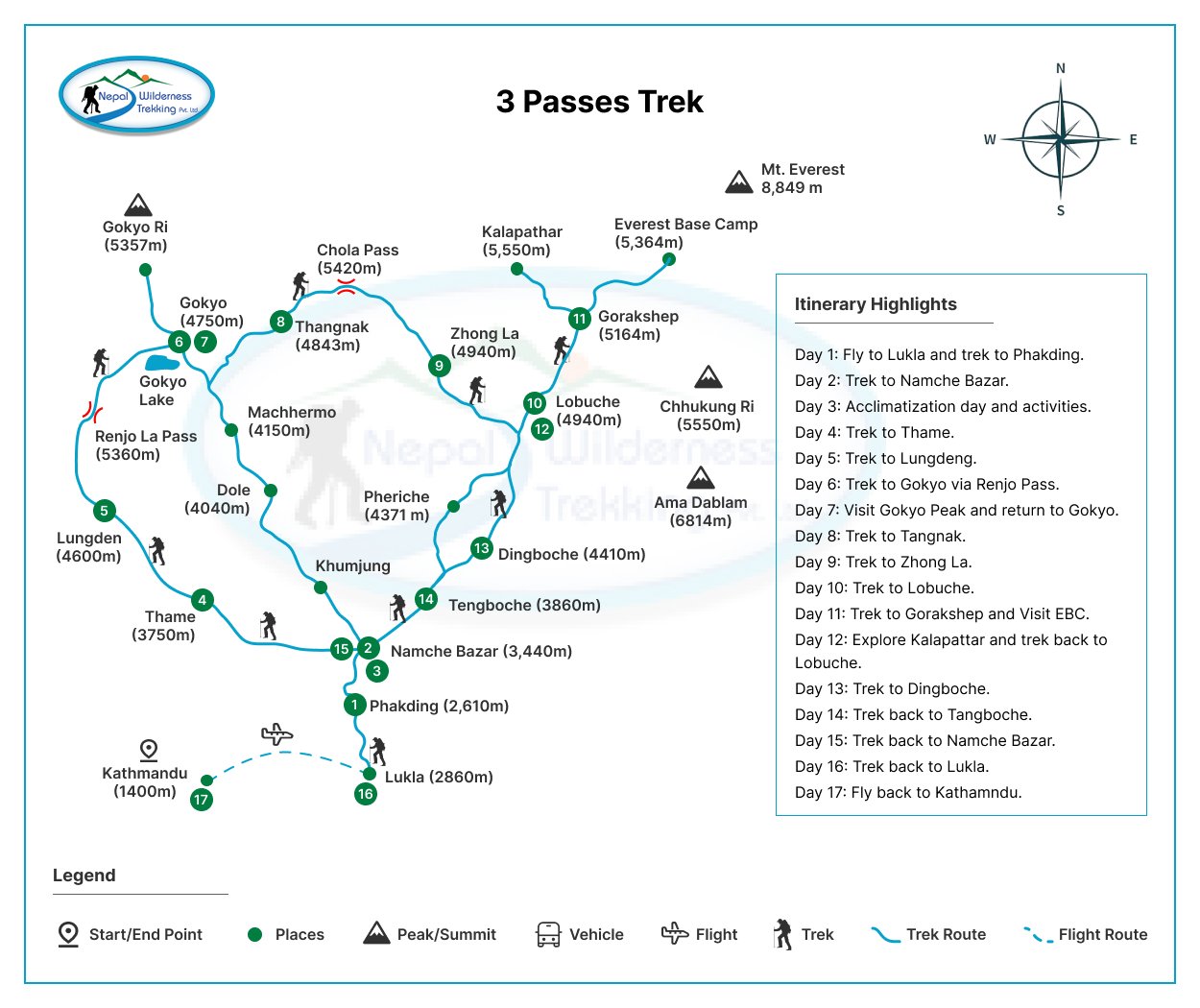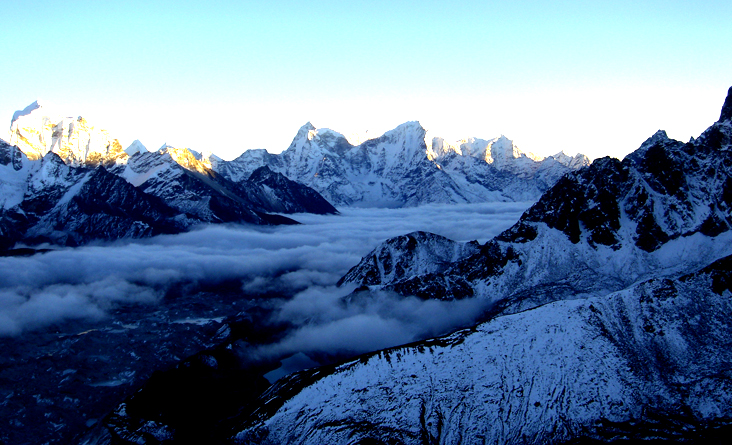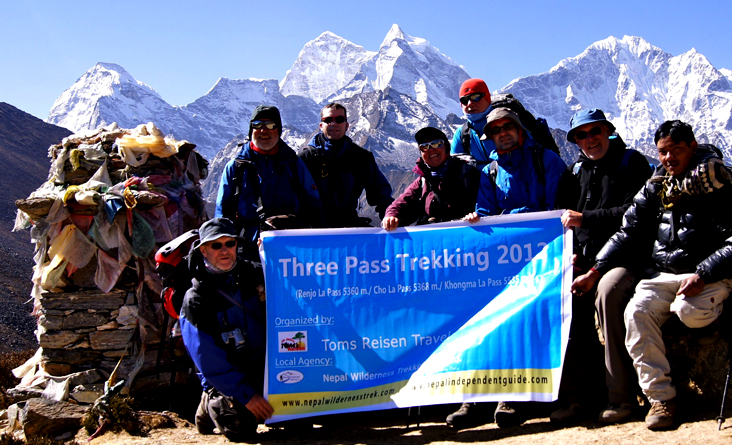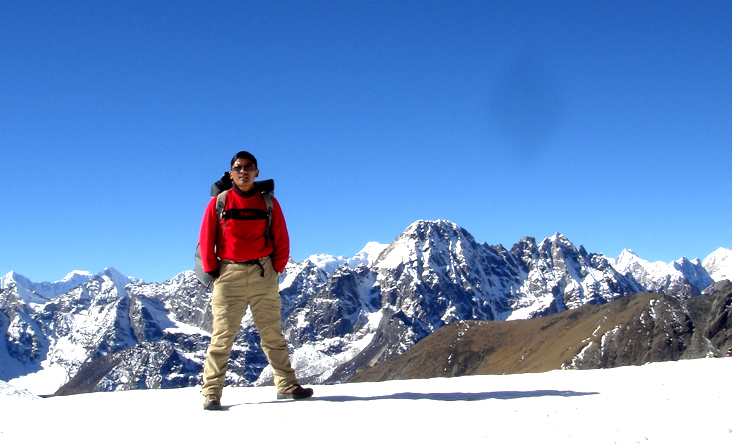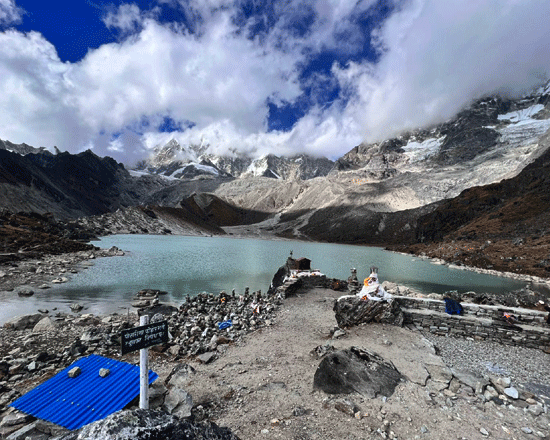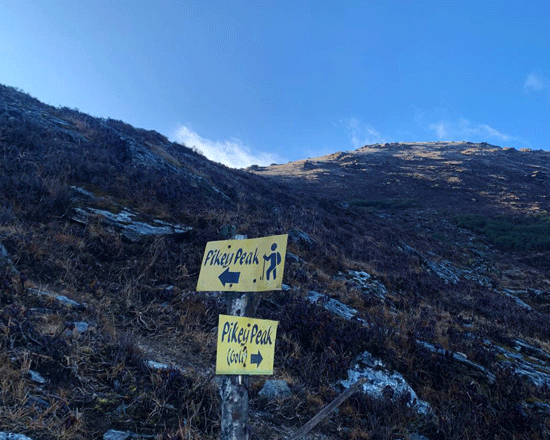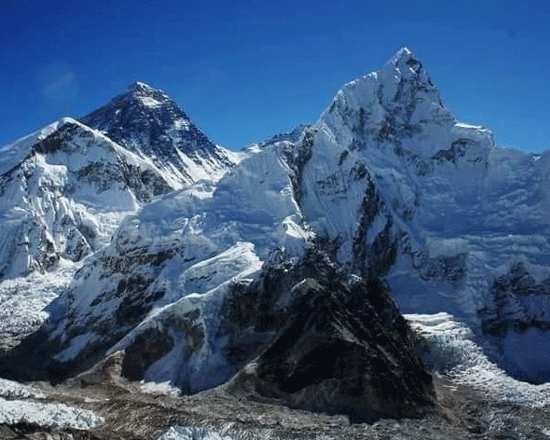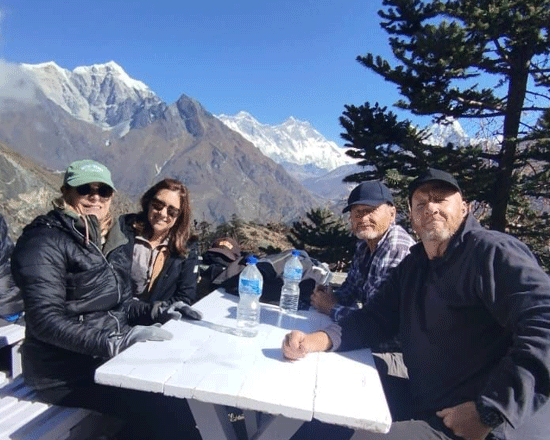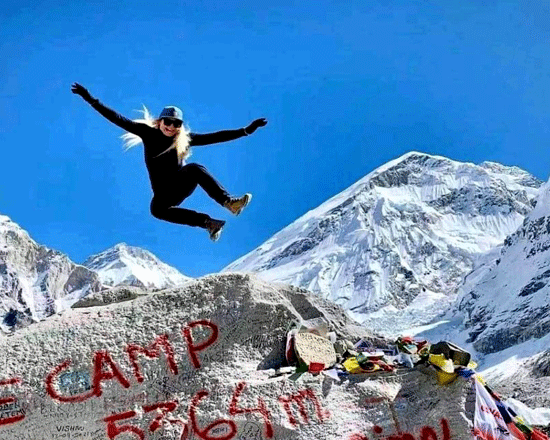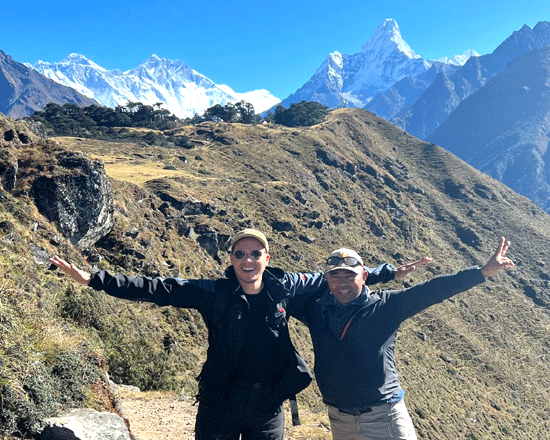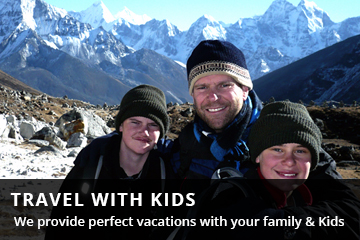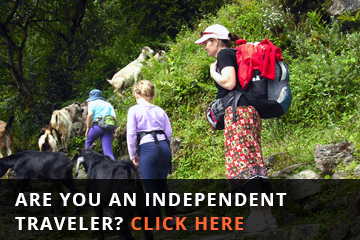Three Passes Trek
Three Passes Trek
Everest RegionTrip Facts
Since the terrain can be hard and the days long, hikers on these treks should be in good physical condition and have some previous mountain walking experience. Steep climbing may be involved, although it is never necessary to use ropes. Treks at this level can he arranged for periods of 16 to 21 days. Typically, a gradual ascent through a green river valley will lead you up to a number of high passes, where you will reach the altitude of 5416m. Often times, you will get a close insight into the Tibetan culture. Participants should expect to trek above 5416m/17872ft.
Mode of Travel : Flight/Land100%
Overview
Everest Three Passes Trek in Nepal:
The 3-pass trek Itinerary follows the Everest Base Camp trekking route for a 17-day Trip, which provides some stunning views of the Himalayas and Mount Everest during the trek. As one of the most scenic treks in the world, the Everest Base Camp trek can be enjoyable. But the Everest Three Passes trek can offer you even more of the region’s beauty. There are a lot of interesting trekking destinations in the inner Sagarmatha National Park, the more demanding Trek Gokyo Lakes trek, and the EBC trek, including the three passes. And this trek takes you through the endpoint of that trek.
The Everest three-pass trek is through a remote alpine highlander area of Sherpa Villages of Khumbu, various landscapes, charming villages, Namche Bazaar, and “Thamel Village” Birthplace of Apa Sherpa which summits 21 times, and Kami Rita Sherpa summits 29 times the top of the world’s highest peak Mt. Everest. also high territory glory Gokyo lake, and largest Khumbu glacier.
Everest 3 High passes trek difficulty:
Furthermore, the Everest Three Passes trek demands moderate difficulty, necessitating significant stamina and hiking skills, with well-prepared equipment including microspikes. The three passes in the Nepal trekking region are consistently covered in snow and ice. This trek itinerary caters to adventurers seeking a challenging and extended journey, comprising 17 days of tough hikes up the mountains, with a round trip of 148 km in total distance. passing over the high-altitude Bhanjyang, Renjo la Pass, Cho la Pass, and Kongma-La Pass.
The best route is clockwise to do the Everest high passes trek that summits Gokyo Ri, Kala Patthar, and Chhukung Ri, as well as smoothly high and high pass Elevations. From these Trekking peaks and passes, you can film – take photographs of beautiful mountains Mt. Everest, Mt. Pumori, Mt. Makalu, Mt. Lhotse, Ama Dablam, and many white peaks, it is a breath-taking mountain view. December and January are remedied alternative paths via Phorche village instead of Cho La because Cho La will be closed if there is heavy snow.
Hidden Peaks Along Everest’s 3 Passes Trek
Enhance, there are many hidden Peaks, surrounding Everest’s three high passes Trekking area, the Sundar Peak 5,360 m in Thame, Nangkartshang Peak 5,100 M in Lungden, Ngozumpa Tse Peak 5,553 M in Gokyo, Awi Peak 5,245 M in Zhong la, Pokalde peak (Dolma Ri 5,806 m) in Kongma-La ridge, Chukhung Ri 5,546 in Chhukung, and Nagartsang Peak 5,083 M in Dingboche. If time allows you to ascend all the peaks, you can add a few extra days to your itinerary.
Why Choose Clockwise Over Counterclockwise Itinerary?
Numerically, it might not seem significant, but when you’re there, even climbing 30 meters can feel challenging. However, for the Nepal Wilderness trekking team, it’s no problem to lead you on either route you prefer. Therefore, we have listed both itineraries and can guide you according to your choice.
Three passes trek distance of km:
Three passes trek vs. Everest base camp, Length is a total distance of 148 kilometers, per day hike is approximately 11.5 Kilometers, though depending on the altitude area. low altitudes can hike more than 11.5 km per day, and above 5,000 altitudes is less km than that.
Guide Essential for Everest 3 Passes Trek
A 3-pass trek is not recommendable without guides and porters for independent solo travelers, the reasons are miserable trails, difficult ascent climbs, icy, slippery Cliffs, high altitude passes, and often changing weather.
The Nepal Wilderness Trekking Guide Team is an expert on the Three Passes trek route. We guide small groups and solo trekkers every week of the day during peak season at a competitive cost. Whether male or female guides, all our guides are well-educated and know the Everest region extensively. They have done the Three High Passes trek numerous times monthly during the season. So, they are familiar with every detail corner of the area, including the terrain, people, culture, and trails.
Three Passes Trek with NWT Company:
The tourism industry recognizes Nepal Wilderness Trekking and Expedition as the top-rated company due to the following salient features. Locally Owned and Operated with Competitive Cost. As a local trekking operator, we have more experience regarding the Three Passes Trek and its surroundings. We know how to get you to the Three Passes route in the best way possible and how to achieve your goal safely.
Our Three Passes Trek’s success rate is great because Nepal Wilderness Trekking is a trustworthy local trekking agency in Nepal, that operates all Three Passes Trek based on reality, integrity, and honesty. We are committed to meeting your needs. We highly value all trekkers and are responsive to their needs and preferences. Depending on the interests and plans of our customers, we can customize our Three Passes Trek package to suit your needs.
Value for money. Nepal Wilderness Trekking provides the value of what you buy of our services at least equal to the amount you pay. You will not be charged any middle and hidden fees when you purchase our services. Our local expert trekking guide will stay in close contact with our clients every step of the way. Our company ensures customers’ safety at all times, so they will have peace of mind while trekking to Three Passes with us.
Challenging for beginners:
For beginner trekkers; The altitude and rugged terrain of the Three Passes trek can pose several challenges. Altitude sickness is a real concern, as the trek takes you above 5,000 meters, where oxygen levels are significantly lower. Proper acclimatization and a slow ascent are crucial to minimize the risk of altitude-related illnesses.
Additionally, the trail can be physically demanding, with steep ascents and descents, rocky paths, and potentially harsh weather conditions. Trekkers should prepare for long days of hiking, often averaging 6 to 8 hours of walking per day. Ultimately, the Three Passes trek may be tough for beginners. It is also a transformative experience that rewards those who dare to take on the challenge with unforgettable memories and a sense of accomplishment.
Everest high passes Trip Highlights:
- The 3 best places for photographers during the Everest High Passes Trek are Gokyo Ri, Kala Patthar, and Chhukung Ri. These vantage points offer breathtaking views of all the high mountains in the area from these three peaks along the route of the three-pass trek.
- The unsurpassed breathtaking view of Mount Everest, Cho Oyu, and Makalu from Gokyo Ri, Kalapathar, and Chhukung
- Experience vibrant Sherpa communities’ cultural heritage
- Stunningly Buddhist religious old monasteries
Trekking Permits:
For the Everest Three Passes trek, you only need two types of permits: the Everest National Park Entry Permit and the Khumbu Pasang Lhamu Rural Municipality Entrance Permit. These permits cover the entire region, all require permits organized by the Nepal Wilderness trekking agency.
Note: All published dates below guarantee departures. If the date doesn’t match your schedule, we’re delighted to organize a trip on your preferred dates private / solo. Share your desired trip details to turn your dream into a reality.
Detail Itinerary
Options A:
- Day 01: Fly to Lukla Hillary airport early in the morning (2860 meters, 35 minutes) and trek to Phakding (2640 meters, 3 hours). Overnight at Lodge.
- Day 02: Trek to Namche Bazaar (3440 meters. 6/7 hours walking) and stay the night at the lodge.
- Day 03: Rest day in the same place for acclimatization. Visit the Sherpa Museum and Everest View Lodge for panoramic views of the Himalayan.
- Day 04: Trek to Thame (3820m) walking for 5 hours. This village is well known to Everest climbers and is a comfortable place to stay overnight.
- Day 05: Trek to Lungdeng (4360m) 5-6 hours walking) and stay overnight at the lodge.
- Day 06: Gokyo (4770 meters.) via Renjo Pass (5360 meters.) 6-hour walking trek) Stay overnight at Gokyo.
- Day 07: Gokyo Peak (5360 meters), our highest point (four and a half hours walking), offers sunrise and an expansive view of the mountain range. Return to Gokyo, and stay overnight at the lodge.
- Day 08: 5 hours walk to Tangnak 4600M. overnight at the lodge (if you have extra days, you can stay one more night in Gokyo and visit the 5th Lake for even more incredible mountain views).
- Day 09: Trek to Zhong La (4830 M. via Chola Pass (5420 meters. Six or seven hours walking) today the path is narrow and tiny ascending to the top of Cho La. Stay overnight at the lodge.
- Day 10: We trekked to Lobuche (4960 meters..4 hours walk) and stayed at a lodge.
- Day 11: Trek to Gorakshep 5190M, visit Everest base camp 5,364 m the same day, and return to Gorakshep, totals hike will be 8/9 hours, overnight at lodge.
- Day 12: Explore Kalapattar (5,550 meters). for the most stunning view of Everest, climb up in the morning before trekking back to Lobuche (5 hours of walking), and spend the night at a lodge.
- Day 13: Cross Kongma-La (5545m), and stay overnight at Chhukung.
- Day 14: Trek back to Tengboche 3860m in five hours and spend the night at the lodge.
- Day 15: Trek back to Namche Bazaar (3440 meters, 6/7 hours walking). Stay overnight at the lodge.
- Day 16: Trek back to Lukla (7/8 hours walking) and overnight at the lodge.
- Day 17: Fly back to Kathmandu around 7:00 AM (35 minutes)
Itinerary Options B:
- Day 01: Fly to Lukla Hillary airport early in the morning (2860 meters, 35 minutes) and trek to Phakding (2640 meters,3 hours). Overnight at Lodge. During the evening village tour,
- Day 02: Trek to Namche Bazaar (3440 meters 6/7 hours walking) and stay the night at the lodge.
- Day 03: Rest day in the same place for acclimatization. Visit the Sherpa Museum and Everest View Lodge for panoramic views of the Himalayan mountains.
- Day 04: Trek to Tengboche 3860min five hours and spend the night at the lodge.
- Day 05: Trek to Dingboche 4,340 m 5-hour hike, overnight at lodge.
- Day 06: rest day for acclimatization, hike to Nagarjuna hill 4800m.
- Day 07: Trek to Chhukung 3-hour hike, overnight at Chhukung, 4700m
- Day 08: trek to Lobuche (4940 meters. Via Kongma-La pass (5540m.6.7 hours walk) and stayed at a lodge.
- Day 09: Trek to Gorakshep 5190M, visit Everest base camp 5,364 m the same day, and return to Gorakshep, totals hike will be 8/9 hours, overnight at lodge.
- Day 10: Explore Kalapattar (5,550 meters). for the most stunning view of Everest, climb up in the morning before trekking back to Zong la 4830 M (5 hours walking), and spend the night at a lodge.
- Day 11: 6 hours walk to Thangnak 4600M. via Chola Pass (5420meters, overnight at the lodge
- Day 12: Trek to Gokyo (4770 meters.) 3-hour walking trek) Stay overnight at Gokyo.
- Day 13: Visit Gokyo Peak (5360 meters), our highest point (four and a half hours' walking). This peak offers sunrise and an expansive view of the mountain range. Return to Gokyo and stay overnight at the lodge.
- Day 14: 5-6 hours walking) to Lungdeng (4600m) via Renjo Pass (5360 meters), stay overnight at the lodge.
- Day 15: Trek to Namche Bazaar (3440 meters 7 hours walking) and stay the night at the lodge.
- Day 16: Trek back to Lukla (7/8 hours walking) and overnight at the lodge.
- Day 17: Fly back to Kathmandu around 7:00 AM (35 minutes)
Cost Included
- Domestic flight tickets from Kathmandu to Lukla and Lukla to Kathmandu
- Italian, Chinese, Nepali, Indian, and other European foods are available three times daily (breakfast, lunch, and dinner).
- Accommodation in tea houses according to the itinerary
- Kitbag for storing your belongings.
- Sleeping bag for a comfortable night's sleep on a trek in minus-25 degrees
- Everest National Park Entrance Trekking Permit
- Khumbu Pasang Lhamu Rural Municipality Entrance Permit
- Experienced English-speaking trekking guide licensed by the government, familiar with the area.
- One porter for every two to three participants. (Note: An additional cost applies for solo clients requiring a porter.)
- Guide, and Porter meals, accommodation, salary, and insurance.
- Necessary paperwork, all government, and local taxes.
- A certificate of appreciation from Nepal wilderness trekking after a successful trek.
Cost Excluded
- Airfare for international flights
- Upon arrival at Tribhuwan International Airport, Nepal entry visa fees vary by duration (15 days - $25-30, 30 days
- Accommodations and meals in Kathmandu before and after our journey
- Personal equipment for high and cold temperatures
- Emergency high-altitude rescue and evacuation are covered by travel insurance
- All beverages, Soft and coffee table drinks such as coke, beer,
- Drinking water/mineral water, Dessert, etc. Hot shower, laundry
- Tip for guide and porter
- Excluded are all costs and expenses not listed under "cost includes"
- Inclusion of costs or delays beyond the control of the management, such as landslides, weather conditions, itinerary modifications due to safety concerns, illness, changes in government policies, strikes, etc.
| Trip Dates | Trip Price | Confirmed Pax | Trip Status | |
|---|---|---|---|---|
| April 16, 2025 | US$ 1500 | Join a Group | Book Now | |
| April 20, 2025 | US$ 1500 | Join a Group | Book Now | |
| April 24, 2025 | US$ 1500 | Join a Group | Book Now | |
| April 28, 2025 | US$ 1500 | Join a Group | Book Now | |
| May 2, 2025 | US$ 1500 | Join a Group | Book Now | |
| May 6, 2025 | US$ 1500 | Join a Group | Book Now | |
| May 10, 2025 | US$ 1500 | Join a Group | Book Now | |
| May 14, 2025 | US$ 1500 | Join a Group | Book Now | |
| May 18, 2025 | US$ 1500 | Join a Group | Book Now | |
| May 22, 2025 | US$ 1500 | Join a Group | Book Now | |
| May 26, 2025 | US$ 1500 | Join a Group | Book Now | |
| May 30, 2025 | US$ 1500 | Join a Group | Book Now | |
| June 4, 2025 | US$ 1500 | Join a Group | Book Now | |
| June 8, 2025 | US$ 1500 | Join a Group | Book Now | |
| June 12, 2025 | US$ 1500 | Join a Group | Book Now | |
| June 16, 2025 | US$ 1500 | Join a Group | Book Now | |
| June 20, 2025 | US$ 1500 | Join a Group | Book Now | |
| June 24, 2025 | US$ 1500 | Join a Group | Book Now | |
| June 28, 2025 | US$ 1500 | Join a Group | Book Now | |
| July 2, 2025 | US$ 1500 | Join a Group | Book Now | |
| July 6, 2025 | US$ 1500 | Join a Group | Book Now | |
| July 10, 2025 | US$ 1500 | Join a Group | Book Now | |
| July 14, 2025 | US$ 1500 | Join a Group | Book Now | |
| July 18, 2025 | US$ 1500 | Join a Group | Book Now | |
| July 22, 2025 | US$ 1500 | Join a Group | Book Now | |
| July 26, 2025 | US$ 1500 | Join a Group | Book Now | |
| July 30, 2025 | US$ 1500 | Join a Group | Book Now | |
| August 4, 2025 | US$ 1500 | Join a Group | Book Now | |
| August 10, 2025 | US$ 1500 | Join a Group | Book Now | |
| August 16, 2025 | US$ 1500 | Join a Group | Book Now | |
| August 22, 2025 | US$ 1500 | Join a Group | Book Now | |
| August 28, 2025 | US$ 1500 | Join a Group | Book Now | |
| September 5, 2025 | US$ 1500 | Join a Group | Book Now | |
| September 10, 2025 | US$ 1500 | Join a Group | Book Now | |
| September 15, 2025 | US$ 1500 | Join a Group | Book Now | |
| September 20, 2025 | US$ 1500 | Join a Group | Book Now | |
| September 24, 2025 | US$ 1500 | Join a Group | Book Now | |
| September 28, 2025 | US$ 1500 | Join a Group | Book Now | |
| October 2, 2025 | US$ 1500 | Join a Group | Book Now | |
| October 6, 2025 | US$ 1500 | Join a Group | Book Now | |
| October 10, 2025 | US$ 1500 | Join a Group | Book Now | |
| October 14, 2025 | US$ 1500 | Join a Group | Book Now | |
| October 18, 2025 | US$ 1500 | Join a Group | Book Now | |
| October 22, 2025 | US$ 1500 | Join a Group | Book Now | |
| October 26, 2025 | US$ 1500 | Join a Group | Book Now | |
| October 30, 2025 | US$ 1500 | Join a Group | Book Now | |
| November 4, 2025 | US$ 1500 | Join a Group | Book Now | |
| November 8, 2025 | US$ 1500 | Join a Group | Book Now | |
| November 12, 2025 | US$ 1500 | Join a Group | Book Now | |
| November 16, 2025 | US$ 1500 | Join a Group | Book Now | |
| November 20, 2025 | US$ 1500 | Join a Group | Book Now | |
| November 24, 2025 | US$ 1500 | Join a Group | Book Now | |
| November 28, 2025 | US$ 1500 | Join a Group | Book Now | |
| December 4, 2025 | US$ 1500 | Join a Group | Book Now | |
| December 10, 2025 | US$ 1500 | Join a Group | Book Now | |
| December 15, 2025 | US$ 1500 | Join a Group | Book Now | |
| December 20, 2025 | US$ 1500 | Join a Group | Book Now | |
| December 25, 2025 | US$ 1500 | Join a Group | Book Now | |
| December 30, 2025 | US$ 1500 | Join a Group | Book Now |
Trip Map
